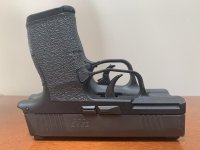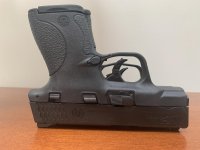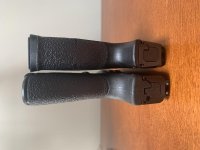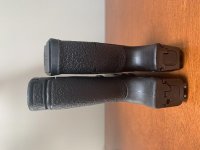It's all in the bore axis. M&P Series pistols have a lower bore axis than some other pistols, so more of the recoil force is transferred into the shooter's palm/wrist rather than the web between the thumb and forefinger, which in turn allows the shooter to keep the pistol more under control.
A pistol with a high bore axis is more prone to muzzle rise, which causes the beavertail to smack down into the web between the thumb and forefinger on the back of the hand.
The snappiest pistol I own is a Smith & Wesson PPK/S chambered in .380 ACP.
Despite being chambered in .380 ACP, being of all steel construction, and weighing in at over 23oz unloaded, the pistol becomes downright painful to shoot after a few magazines because the extended beavertail just keeps on hammering the back of the hand. I once shoot a mere 100 rounds of ammo through it at the range and went home with back of my hand bloodied, bruised, and swollen.
Oh, and before anyone goes thinking that I'm being overly dramatic or exaggerating, I'm not.
I also shoot this...
And yes, it has LESS felt recoil.
How, you ask? It's simple, because the PPK/S is straight blowback operated, meaning the only thing holding the action closed is the combined mass of the slide and weight of the recoil spring. The barrel is fixed in place and doubles as a guide rod, it doesn't lock the action, and the bore axis is rather high, so all of that recoil is transferred directly into the web between the thumb and forefinger. The Taurus Judge Magnum also has a fixed barrel and a high bore axix, but being a hefty 37oz Revolver which has been fitted with a nice pair of aftermarket grips, the gun just rolls back a bit in the hand under recoil, so the recoil doesn't hurt. Yes, it's certainly a handful, especially with 3" .410 000 Buckshot Shells, but there's no steel beavertail smacking down into the hand.
So yeah, felt recoil is a crazy thing like that.




